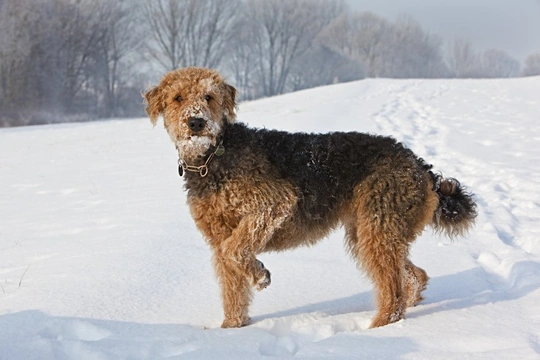
Spondylosis Deformans - A Spine Disorder
Spondylosis Deformans is disease that affects a dog's spine where bone spurs start to develop on the edges of the vertebrae. It is a degenerative disorder that typically affects in a dog's lower back and although the cause remains unknown, there is some belief that the condition occurs as dogs get older or when they have suffered some sort of injury to their spine.
Causes
As previously mentioned, it is thought that some dogs may develop Spondylosis due to the fact they suffered an injury to their spine, this includes suffering from a slipped disc (intervertebral disc disease) or because they had some form of trauma to their spines. Another factor that may well contribute to a dog developing the condition is when they experience repeated pressure to certain joints through over-exercise or strenuous activities. They may well develop the condition as a result of congenital deformities, but as yet the actual reason why some dogs develop the condition remains unknown.
Dogs Most Susceptible to Spondylosis
As dogs age and reach middle age or their senior years, they are more prone to developing from Spondylosis. With this said, bigger breeds are also known to be more predisposed to suffering from the condition. Research has also suggested that certain breeds can be more predisposed to developing Spondylosis which includes the following:
- Boxer
- German Shepherd
- Airedale Terrier
- Cocker Spaniel
- Dachshund
However, there is some debate as to whether Spondylosis affects larger dogs more than medium to small size breeds, so the jury is still out.
Symptoms to Watch Out For
When a dog starts to develop Spondylosis there are certain changes in their spine that can be felt rather than seen. However, when anyone touches a dog’s back, they would often show signs of being in pain and shy away from the touch. Other signs there may be a problem include the following:
- Stiffness
- A reluctance to move
- Continual discomfort
Diagnosing the Condition
A vet would need to have a dog's full medical history before carrying out a thorough physical examination to determine whether they are suffering from Spondylosis Deformans. They would also have to carry out certain tests which includes doing a full blood count, a biochemical profile, a urinalysis and also an electrolyte panel with an end goal being to eliminate other reasons why a dog may be suffering from the condition. They would also need to take X-rays of a dog's chest and their abdomen which is an essential part of determining whether a dog is suffering from this painful condition.
Treating a Dog with Spondylosis Deformans
Because there are no obvious signs of there being a problem at the onset of Spondylosis, all too often boney spurs that grow on a dog's spine may well have caused nerve and tissue damage. As such, dogs with the condition are in a lot of pain and would need to be hospitalised so that a vet could establish the best treatment for them and whether surgical intervention would be necessary. However, if the condition is caught early enough, a vet may be able to treat a dog with certain medications and pain control. In some cases, acupuncture has been seen to be effective when it comes to pain management in dogs suffering from Spondylosis Deformans.
Prognosis
Even if the condition is caught early and a treatment set in place, the prognosis is generally guarded. However, after-care is an all-important factor when it comes to helping a dog that suffers from the condition and it’s essential for them to be kept as comfortable and pain-free as possible. If the condition goes unnoticed or is not treated early, it can be that much harder for vets to manage a dog's pain and therefore the prognosis is never that good.
Living with a Dog with Spondylosis
Dogs suffering from Spondylosis Deformans would need to see a vet on a regular basis so their condition can be reassessed on an ongoing basis. Dogs with the condition should not be given too much exercise and if it is deemed severe, a vet might recommend complete rest. It's also important for dogs to be kept in a calm and quiet environment so that any stressful situation is avoided. It's also essential for dogs to be given their medication as prescribed by a vet. Only when a vet has examined a dog and established that they are no longer experiencing any pain should a dog be exercised as normal again. However, care always has to be taken not to let a dog that's suffered from Spondylosis take part in any sort of extremely strenuous activities which could negatively impact their spines.



